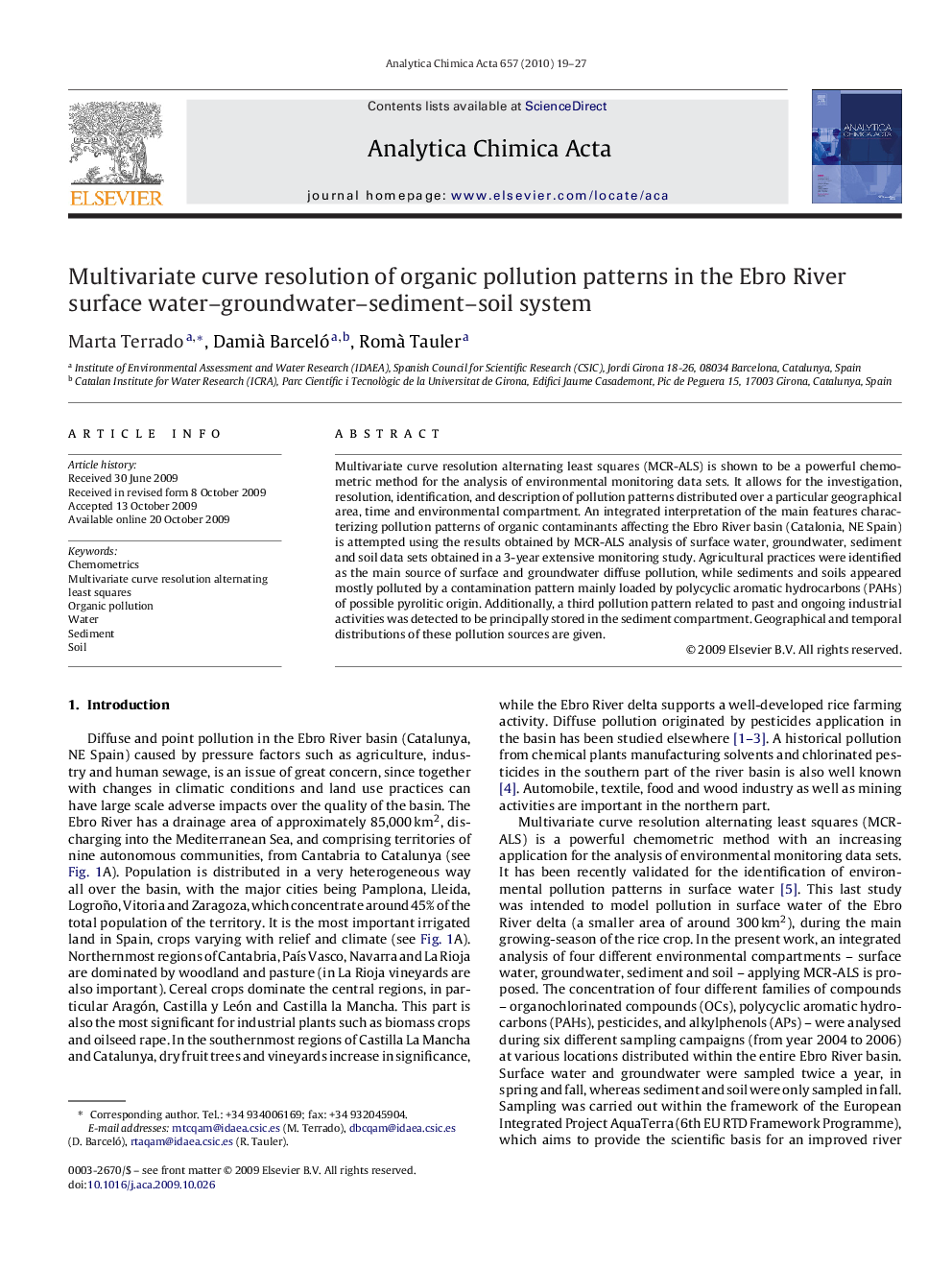| Article ID | Journal | Published Year | Pages | File Type |
|---|---|---|---|---|
| 1168106 | Analytica Chimica Acta | 2010 | 9 Pages |
Abstract
Multivariate curve resolution alternating least squares (MCR-ALS) is shown to be a powerful chemometric method for the analysis of environmental monitoring data sets. It allows for the investigation, resolution, identification, and description of pollution patterns distributed over a particular geographical area, time and environmental compartment. An integrated interpretation of the main features characterizing pollution patterns of organic contaminants affecting the Ebro River basin (Catalonia, NE Spain) is attempted using the results obtained by MCR-ALS analysis of surface water, groundwater, sediment and soil data sets obtained in a 3-year extensive monitoring study. Agricultural practices were identified as the main source of surface and groundwater diffuse pollution, while sediments and soils appeared mostly polluted by a contamination pattern mainly loaded by polycyclic aromatic hydrocarbons (PAHs) of possible pyrolitic origin. Additionally, a third pollution pattern related to past and ongoing industrial activities was detected to be principally stored in the sediment compartment. Geographical and temporal distributions of these pollution sources are given.
Keywords
Related Topics
Physical Sciences and Engineering
Chemistry
Analytical Chemistry
Authors
Marta Terrado, Damià Barceló, Romà Tauler,
